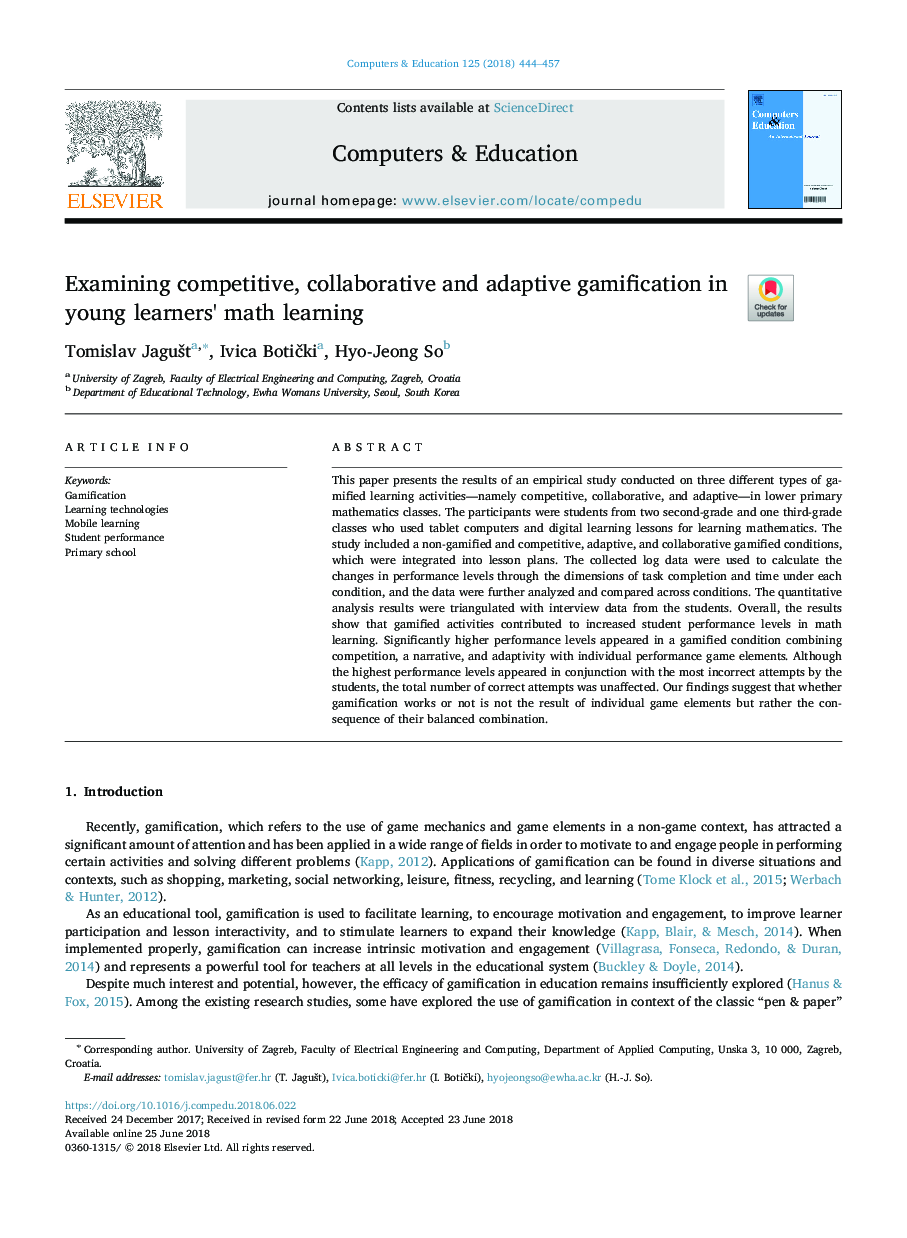| Article ID | Journal | Published Year | Pages | File Type |
|---|---|---|---|---|
| 6834653 | Computers & Education | 2018 | 14 Pages |
Abstract
This paper presents the results of an empirical study conducted on three different types of gamified learning activities-namely competitive, collaborative, and adaptive-in lower primary mathematics classes. The participants were students from two second-grade and one third-grade classes who used tablet computers and digital learning lessons for learning mathematics. The study included a non-gamified and competitive, adaptive, and collaborative gamified conditions, which were integrated into lesson plans. The collected log data were used to calculate the changes in performance levels through the dimensions of task completion and time under each condition, and the data were further analyzed and compared across conditions. The quantitative analysis results were triangulated with interview data from the students. Overall, the results show that gamified activities contributed to increased student performance levels in math learning. Significantly higher performance levels appeared in a gamified condition combining competition, a narrative, and adaptivity with individual performance game elements. Although the highest performance levels appeared in conjunction with the most incorrect attempts by the students, the total number of correct attempts was unaffected. Our findings suggest that whether gamification works or not is not the result of individual game elements but rather the consequence of their balanced combination.
Related Topics
Social Sciences and Humanities
Social Sciences
Education
Authors
Tomislav JaguÅ¡t, Ivica BotiÄki, Hyo-Jeong So,
